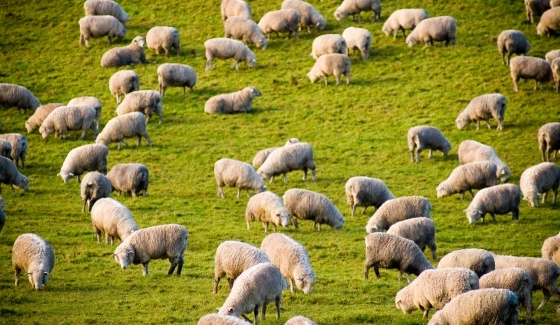
Almost without exception, if I ask a sheep producer what they would like to improve in their sheep they tell me that they would like to wean more lambs. Sometimes they are keen to improve the scanning percentage but mostly they are keen to improve lamb survival. There has been some great work done in the last two decades that has helped producers to tailor their nutrition and management strategies to improve both scanning percentages and lamb survival. However, there has been less emphasis on using genetics to achieve this outcome.
Can genetics have an influence on reproduction?
All of us know the answer to this question – we have seen different breeds deliver considerably different reproductive rates. However, there is also a large difference in the reproductive potential within a breed and this does not receive a lot of attention in many enterprises. Reproductive traits have very low heritability estimates; reproductive rate has a heritability of around 5% and lamb survival is even lower at 2%, which could easily make you think that gain is hopeless. However, the low heritability partly reflects the fact that there are a lot of different non-genetic factors that can influence reproduction. The great thing is that there is a lot of variation, between and within breeds, so even though the heritability is low, the large variation means that there is still the opportunity to make significant rates of genetic gain.
Does buying twin born rams help?
Yes and no! The problem with the strategy of buying twin born rams is that we do not know why that ram ended up being a twin. Was its mother on great feed when the ram was conceived? Was it the fact that the ram’s mother was an older ewe rather than a ewe lamb or maiden ewe? Or did its mother lose its lamb in the previous season so it was very fat when it went to the ram? These and other factors can blur the impact of the ‘twin-born’ buying strategy. Buying twin born lambs, keeping only twin-born ewes and keeping ewes that have twins will all slowly increase reproductive performance but there is a lot of error still involved in the decision and error is the enemy of genetic gain.
Using ASBVs for reproduction to make gains in reproduction
More than any other trait that you might be interested in, ASBVs are powerful in helping to find rams that will deliver more reproductive daughters. The ASBVs for reproduction consider as many of the non-genetic factors as possible. They also consider reproductive performance of all the ewes that are related to the ram. This is where their real power lies. Rather than just being an estimate of a single reproductive event (like whether the ram was born as a single or twin), the reproductive ASBVs consider all the reproductive history of animals related to the individual. Historically we have had the number of lambs born (NLB) and number of lambs weaned (NLW) ASBVs available to use. Recently Sheep Genetics have started providing additional ASBVs for conception (CON), litter size (LS) and ewe rearing ability (ERA). These are not available for all breeds yet, but will be in time.
Harness the power
The range in ASBVs for these reproductive traits is large within any breed. If improving the number of lambs produced is important to you, search for rams with superior ASBVs and harness the power of genetics. Of course, the sheep will only reach their genetic potential if they are appropriately fed, but having the right genetics is one of the pillars to improving your lamb weaning percentages.
Producer demonstration sites
neXtgen Agri are running a number of demonstration sites with support from MLA where rams with different genetics for reproduction are being compared. We are following the daughters of the rams through to see how they perform over different seasons. If you would like to keep updated on the project check it out HERE.



.jpg)

.webp)



